Refer to the exhibit.

The device exchanges routes using IBGP.
Which two statements are correct about the IBGP configuration and routing information on the device? (Choose two.)
What three characteristics apply to provisioning templates available on FortiManager? (Choose three.)
Refer to the exhibit.
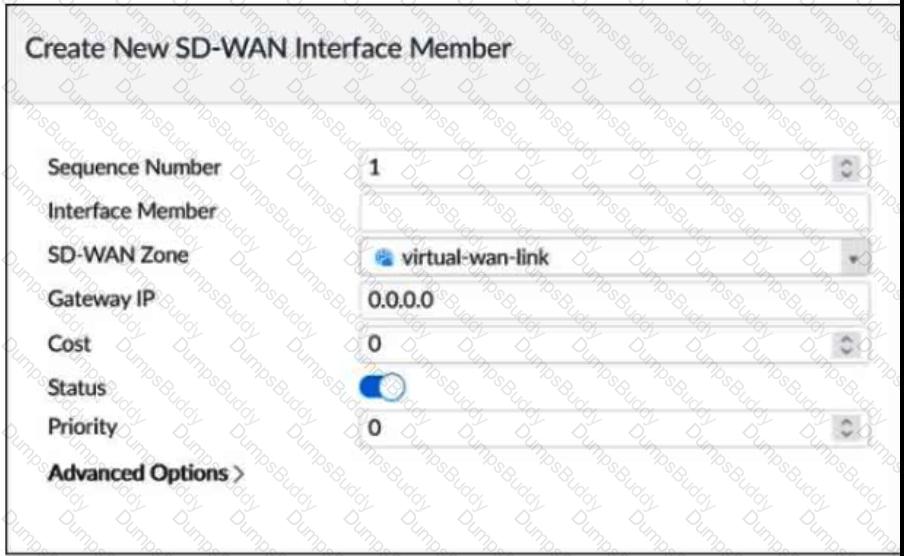
Which two SD-WAN template member settings support the use of FortiManager meta fields? (Choose two.)
Which two statements are correct when traffic matches the implicit SD-WAN rule? (Choose two.)
The SD-WAN overlay template helps to prepare SD-WAN deployments. To complete the tasks performed by the SD-WAN overlay template, the administrator must perform some post-run tasks. What are three mandatory post-run tasks that must be performed? (Choose three.)
The administrator uses the FortiManager SD-WAN overlay template to prepare an SD-WAN deployment. With information provided through the SD-WAN overlay template wizard, FortiManager creates templates ready to install on spoke and hub devices.
Select three templates created by the SD-WAN overlay template for a spoke device. (Choose three.)

Which two conclusions for traffic that matches the traffic shaper are true? (Choose two.)
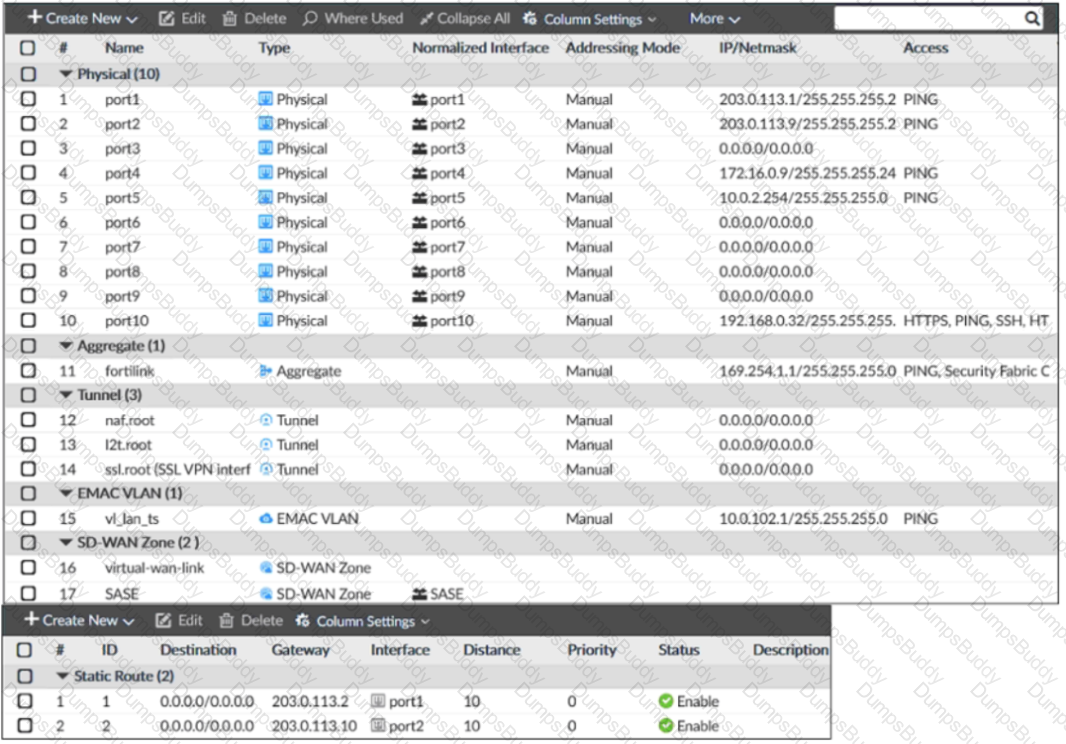
Exhibit B –

Exhibit A shows the system interface with the static routes and exhibit B shows the firewall policies on the managed FortiGate.
Based on the FortiGate configuration shown in the exhibits, what issue might you encounter when creating an SD-WAN zone for port1 and port2?
Refer to the exhibit.
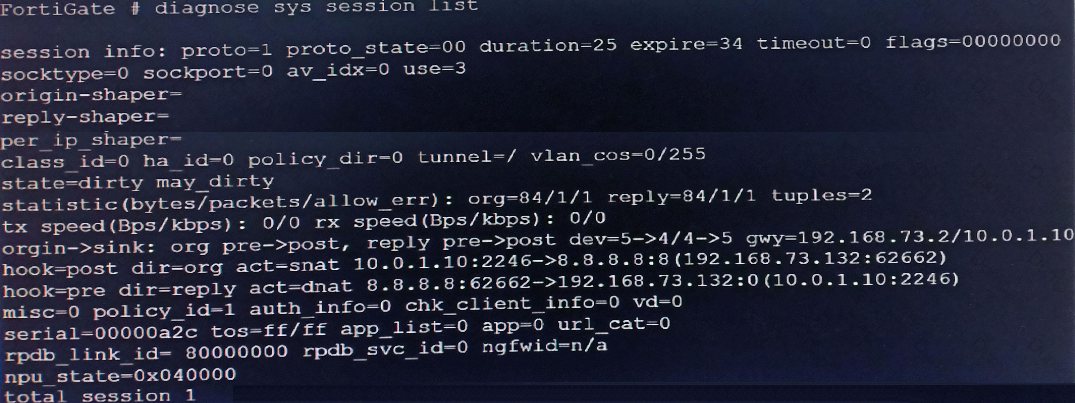
Based on the exhibit, which statement about FortiGate re-evaluating traffic is true?
What are two advantages of using an IPsec recommended template to configure an IPsec tunnel in an hub-and-spoke topology? (Choose two.)
Within IPsec tunnel templates available on FortiManager. which template will you use to configure static tunnels for a hub and spoke topology?
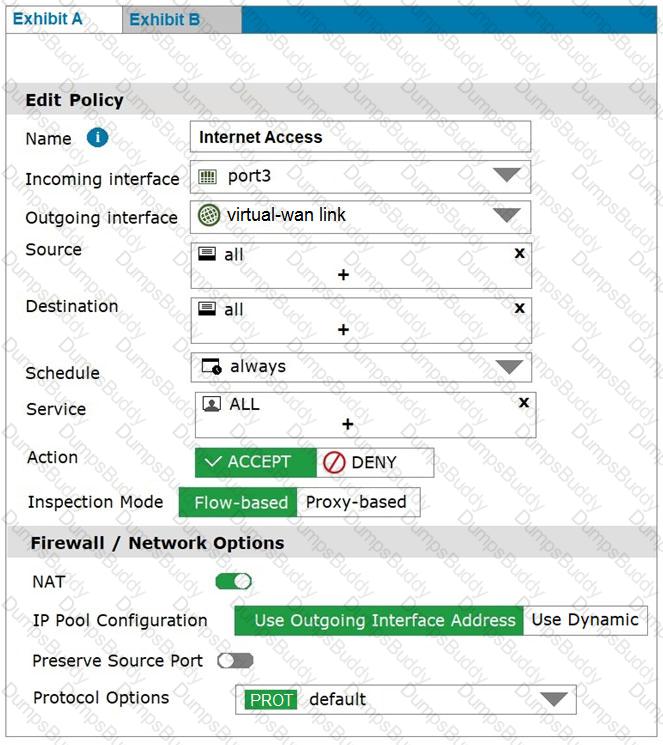
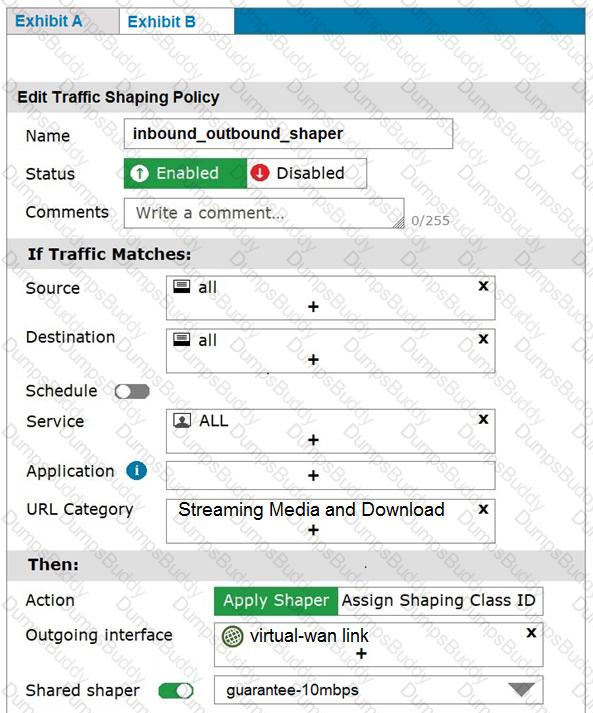
Exhibit A shows the firewall policy and exhibit B shows the traffic shaping policy.
The traffic shaping policy is being applied to all outbound traffic; however, inbound traffic is not being evaluated by the shaping policy.
Based on the exhibits, what configuration change must be made in which policy so that traffic shaping can be applied to inbound traffic?
Which diagnostic command can you use to show the configured SD-WAN zones and their assigned members?
Refer to the exhibits.
Exhibit A -
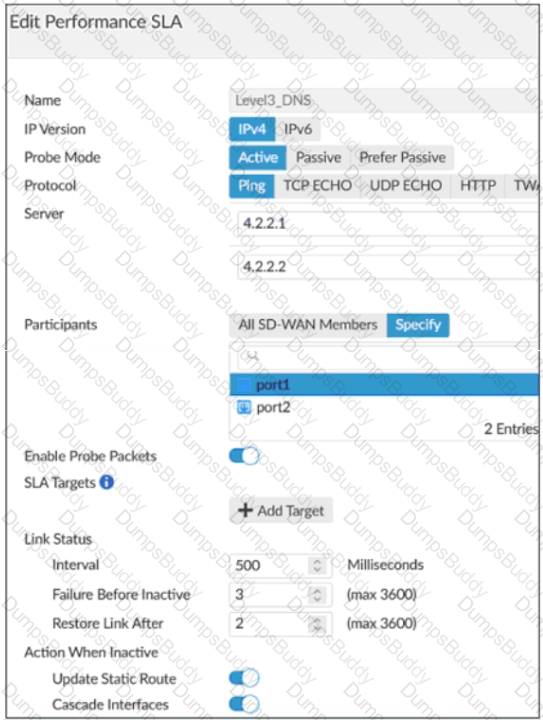
Exhibit B -
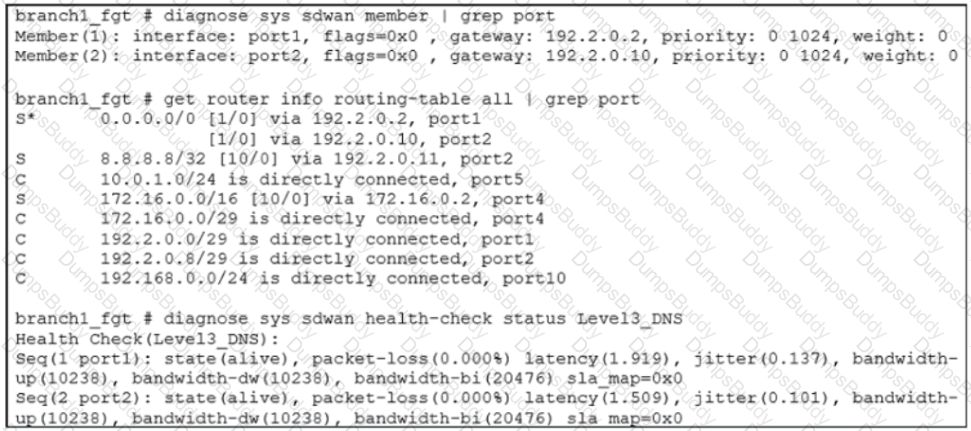
Exhibit A shows the SD-WAN performance SLA and exhibit B shows the SD-WAN member status, the routing table, and the performance SLA status.
If port2 is detected dead by FortiGate, what is the expected behavior?
Refer to the exhibits.
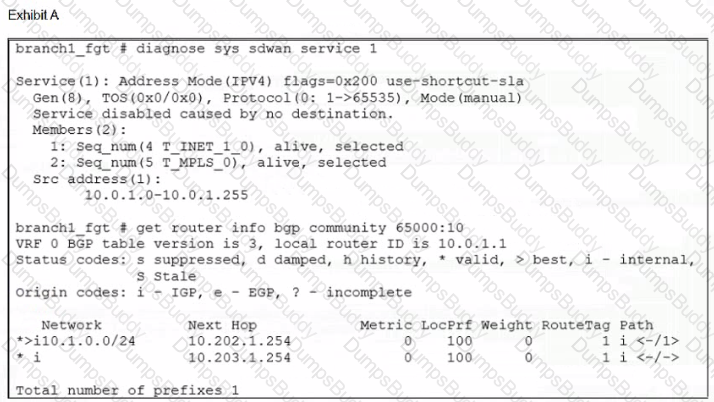
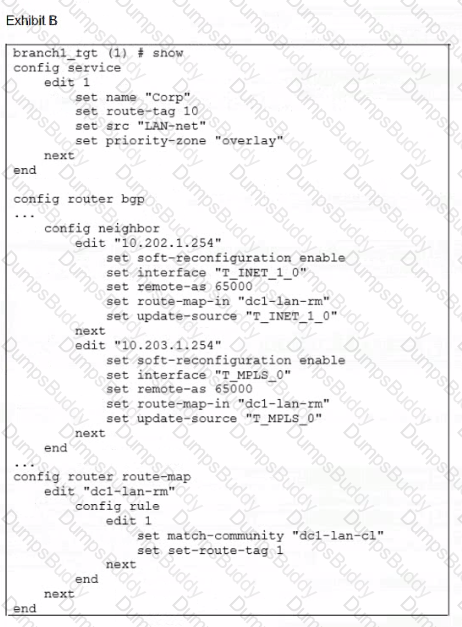
Exhibit A shows the SD-WAN rule status and the learned BGP routes with community 65000:10.
Exhibit B shows the SD-WAN rule configuration, the BGP neighbor configuration, and the route map configuration.
The administrator wants to steer corporate traffic using routes tags in the SD-WAN rule ID 1.
However, the administrator observes that the corporate traffic does not match the SD-WAN rule ID 1.
Based on the exhibits, which configuration change is required to fix issue?
Refer to the exhibit.
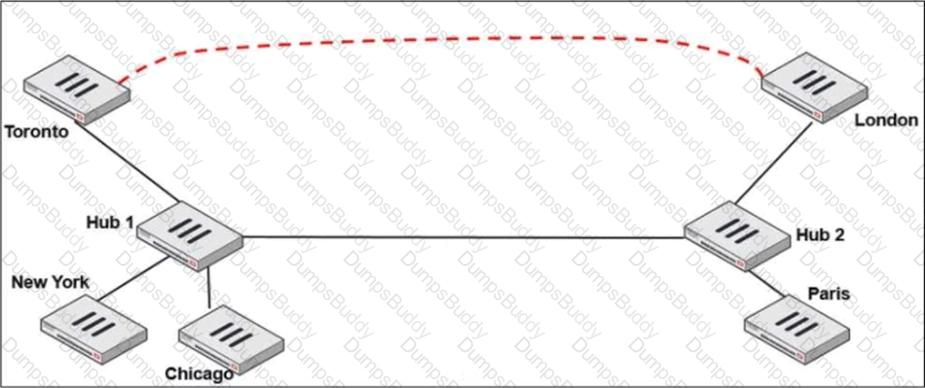
Two hub-and-spoke groups are connected through a site-to-site IPsec VPN between Hub 1 and Hub 2.
Which two configuration settings are required for Toronto and London spokes to establish an ADVPN shortcut? (Choose two.)
Refer to the exhibits.
Exhibit A
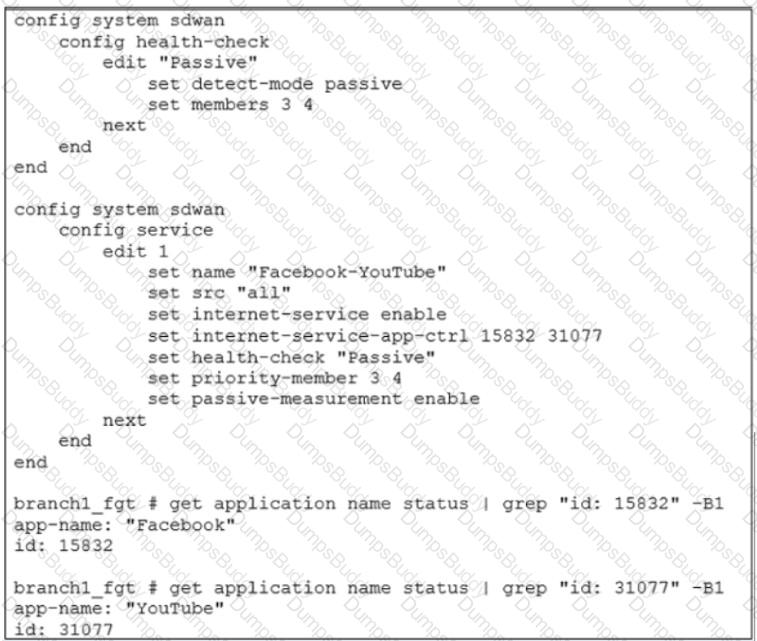
Exhibit B
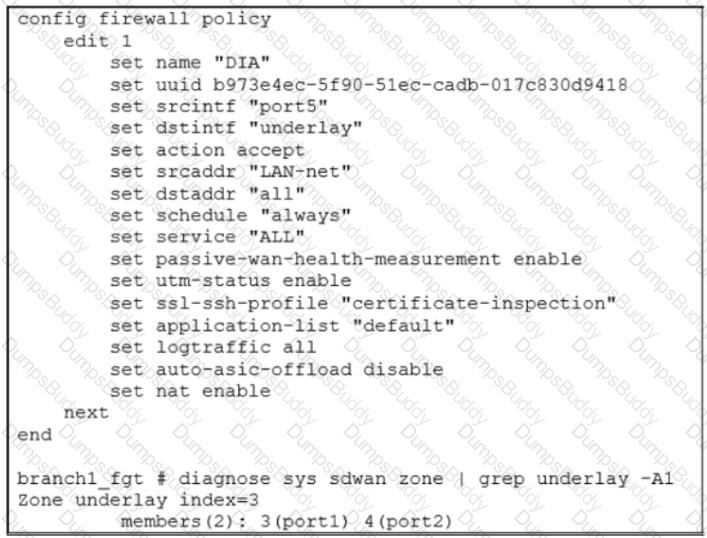
Exhibit A shows the SD-WAN performance SLA configuration, the SD-WAN rule configuration, and the application IDs of Facebook and YouTube. Exhibit B shows the firewall policy configuration and the underlay zone status.
Based on the exhibits, which two statements are correct about the health and performance of port1 and port2? (Choose two.)
Refer to the exhibit.

In a dual-hub hub-and-spoke SD-WAN deployment, which is a benefit of disabling theanti-replaysetting on the hubs?
What are two benefits of using the Internet service database (ISDB) in an SD-WAN rule? (Choose two.)
Refer to the exhibit, which shows the IPsec phase 1 configuration of a spoke.
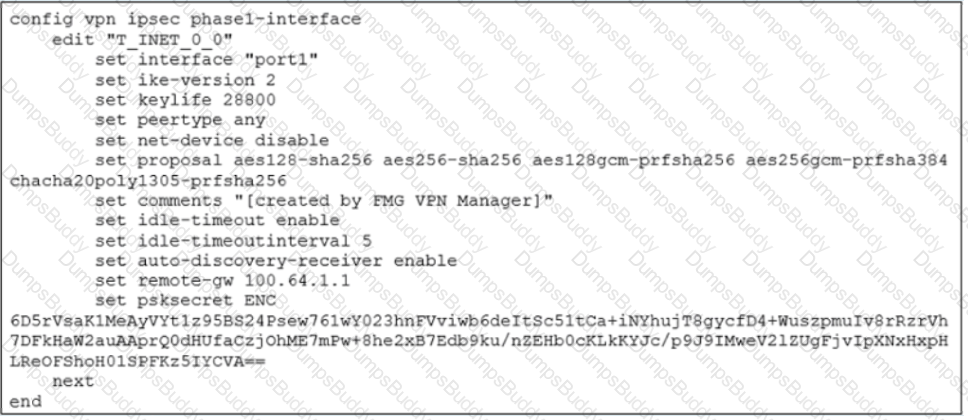
What must you configure on the IPsec phase 1 configuration for ADVPN to work with SD-WAN?
Which two statements describe how IPsec phase 1 main mode is different from aggressive mode when performing IKE negotiation? (Choose two )